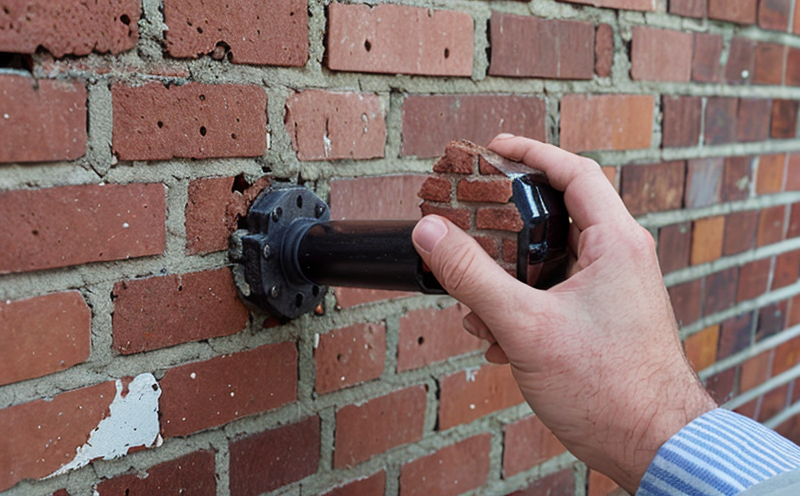Brickwork quality inspection
The inspection of brickwork is a critical process in construction and building projects. Ensuring that the brickwork meets required standards is essential to guarantee structural integrity, aesthetic appeal, and long-term durability. This service involves detailed examination of brick masonry structures using various techniques to assess compliance with relevant codes and specifications.
Quality inspections are performed by trained professionals who use a combination of visual assessments, non-destructive testing (NDT), and destructive testing methods where necessary. The aim is to identify any issues early in the construction process, thereby preventing costly repairs or rework later on. Compliance officers and quality managers play a crucial role in overseeing these inspections.
The inspection criteria include checking for proper mortar consistency, brick alignment, joint uniformity, weather resistance properties of bricks, and overall structural stability. These inspections are important not only during construction but also after completion to ensure ongoing performance and safety standards.
Accurate documentation is another key aspect of this service. Detailed reports are generated highlighting any deficiencies found along with recommendations for corrective actions if required. This ensures that all stakeholders have clear visibility into the quality of work performed at every stage.
Regular maintenance checks following initial inspection help maintain optimal performance over time, which is especially important in areas prone to harsh environmental conditions such as coastal regions or locations subject to frequent temperature fluctuations.
In summary, thorough brickwork quality inspections are vital for ensuring that buildings meet the necessary standards for safety, durability, and aesthetic value. Properly conducted inspections can significantly reduce long-term maintenance costs and enhance user satisfaction by providing reliable structures that last longer.
Applied Standards
| Standard | Description |
|---|---|
| ASTM C170 | Determination of the water absorption and apparent porosity of masonry units. |
| BS 5628-3:1983 | Specification for bricks used in construction - Determination of efflorescence on fired clay bricks, pavers and related products. |
| EN 12390-4 | Determination of the modulus of rupture (flexural strength) by three-point bending test. |
Scope and Methodology
The scope of brickwork quality inspection covers a wide range of activities aimed at ensuring that all aspects of masonry meet the specified requirements. The methodology includes:
Visual examination to check for proper alignment, joint consistency, and aesthetic finish.
Use of non-destructive testing techniques such as ultrasonic testing or infrared thermography to assess internal defects without damaging the structure.
Destructive testing when necessary, where small samples are removed from the brickwork for detailed analysis under laboratory conditions.
Evaluation against relevant standards and specifications like those listed in the Applied Standards section.
Throughout these processes, compliance officers ensure that all procedures adhere strictly to regulatory requirements. By doing so, they contribute significantly towards maintaining high-quality construction practices across various sectors including residential buildings, commercial complexes, industrial facilities, etc.
Why Choose This Test
Ensures compliance with industry standards and regulations.
Identifies potential issues early in the construction process to avoid costly reworks.
Provides reliable data for decision-making processes regarding material selection and design adjustments.
Promotes long-term durability and safety of structures by addressing immediate concerns promptly.
Supports sustainable development goals through efficient use of resources during construction phases.
Selecting this service guarantees peace of mind for clients knowing that their projects are being monitored closely throughout the entire lifecycle, from planning stages right up until final handover. It also demonstrates a commitment to excellence and adherence to best practices within the industry.





